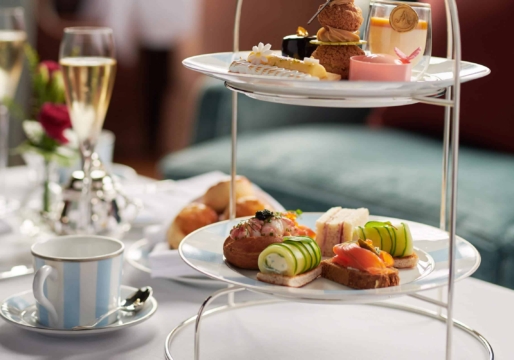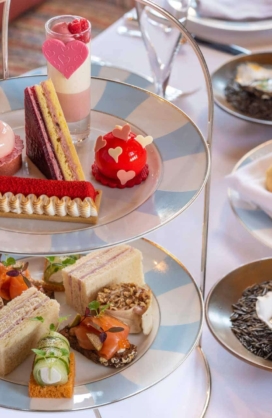The Gallery at Adare Manor is a masterpiece within a masterpiece: the Dunraven family’s favourite room, and the centre of their family life in the manor house. In 1832, the 2nd Earl of Dunraven and his wife, Lady Caroline, decided to embark on a complete redesign of their family home, building a grand new Manor House in a legendary gothic style. Of all the superb apartments in Adare Manor, The Gallery was the most intimate expression of their creativity and love for beauty, a family sitting room adorned with every beautiful architectural flourish and ornament they could imagine: a process of furnishing and decoration which spanned years. The 2nd Earl once wrote: “The Gallery looks almost like a Cathedral…I do not know how we shall ever fill it.”
The monumental scale of the room was not an accident: its design was inspired by the great cathedrals and long castle galleries of Europe, and by the legendary Hall of Mirrors in Versailles. Its star furnishings were drawn from the treasure troves of the continent in a series of European tours. The deeply expressive woodcarvings, including choir stalls (known as misericords) and the 15th century door found at the western end of The Gallery, came from the Church of Saint Paul in Antwerp, Belgium. The breathtaking stained-glass windows, which trace the noble lineage of the Wyndham and Quin families, were commissioned by the Earl from the finest glass artists in London, and dedicated “in the love and honour of Caroline Wyndham, his countess.” Other pieces were sourced closer to home. A copy of one of those gorgeous carved choir stalls was completed so expertly by local woodcarvers that no one could tell the difference, and further massive oak carvings were commissioned to fill the room with scenes from scripture. Lavish tapestries to cover the walls were embroidered by local schoolgirls. Imposing marble fireplaces were created from “neighbourhood marble.” These masterworks by local craftspeople were more than adornments for a mansion: they became a source of employment and financial support for Adare village during one of the most devastating periods of Irish history, sheltering the community from the worst deprivations of the famine.
For all the grandeur of the space, this was very much a living room: a place of comfort and warmth for all the family. Lady Caroline, describing the felicity of their everyday life here, wrote: “Musical instruments and games of different kinds are scattered throughout the room, a constant supply of rare and beautiful plants is brought in from the conservatory, and their perfume, added to the delicious tones of the organ, and the beauty of all that the eye rests upon, forms a most perfect combination of refined enjoyment.” Today, the reimagined Gallery at Adare Manor continues that legacy of elegance and joy.













